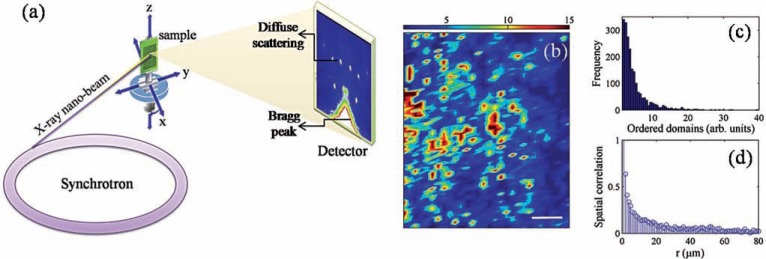Fig. (3).
(Panel a) Typical experimental setup for high spatial resolved porobes. Synchrotron X ray in focused on (sub)micrometric sample areas. A single collected frame, onto an area CCD detector, allows us to get information about average crystalline structure (Bragg peak) and about defects organization (diffuse scattering). High precision mechanical x-y-z stages allow the sample to move under the beam. (Panel b) Mapping of intensity measured from diffuse scattering due to satellite reflections associated to interstitial oxygen defects. The bar is 20 microns. Both the (c) spatial distribution and the (d) spatial correlation of satellite intensity, related to the density of ordered domains, follow a clear power-law behavior, indicating a scale-free, fractal structural organization of ordered interstitials oxygen. Details about spatial distribution and spatial correlation calculations can be found in ref. [25]. Is this particular defects topology that gives the optimum superconducting temperature.

